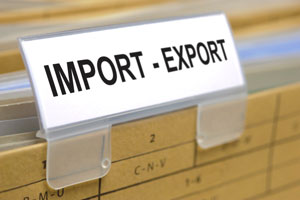What Determines How Much Countries Trade?

The amount of trade between two countries depends on several factors. A recent article in The Regional Economist discussed some of those factors.1
Comparative Advantage
Comparative advantage occurs when one country can produce a good or service at a lower opportunity cost than another country. The authors noted that comparative advantages in production can be generated by differences in the skill sets of the labor forces of the countries, differences in the quality of the physical capital, and differences in the quality or abundance of natural resources used as inputs, among other things.
Policy
Some policies may impose large barriers to trade, obviously deterring trade from occurring. Other types of policies may have impacts as well. For example, monetary policy rules that target the exchange rate can shift relative prices between two countries, making trade more or less favorable.
Tariffs or Trade Agreements
An example of the impact of trade agreements can be seen in the Transatlantic Trade and Investment Partnership (TTIP), which is being negotiated between the European Union and the U.S. The TTIP would standardize regulations in the production of goods, so that, for example, the safety features of cars would not have to be approved by both countries involved.
“Iceberg” Costs
As an iceberg drifts away from its place of origin, it melts and grows smaller. Similarly, as the distance grows between two countries, the costs of trading goods increase, and the benefits of trade decrease. The authors pointed out that distance can mean more than just physical distance, including issues such as access to transportation.
Institutions
However, some economists have proposed that physical distance may be becoming less important than countries simply being similar to one another. The authors wrote, “In our rapidly globalizing and technologically advancing world, country-specific characteristics, such as common language spoken and laws regarding conflict resolution, supersede the significance of physical distance in determining the prevalence of trade between countries.”
Notes and References
1 This post is based on a sidebar to an article written by Assistant Vice President and Economist Michael Owyang, Senior Research Associate Diana Cooke, Research Fellow Christopher Otrok—all with the St. Louis Fed—and M. Ayhan Kose, director of the Development Prospects Group at the World Bank. Otrok is also the Sam B. Cook Professor of Economics at the University of Missouri.
Additional Resources
- Regional Economist: Regional vs. Global: How Are Countries’ Business Cycles Moving Together These Days?
- On the Economy: Internal Devaluation in Eurozone Peripheral Countries
- On the Economy: Why Has International Trade Increased So Much?
Citation
ldquoWhat Determines How Much Countries Trade?,rdquo St. Louis Fed On the Economy, May 26, 2015.
This blog offers commentary, analysis and data from our economists and experts. Views expressed are not necessarily those of the St. Louis Fed or Federal Reserve System.
Email Us
All other blog-related questions

